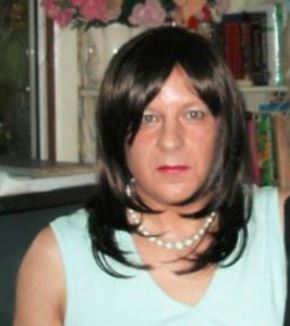Originally posted 2016-07-24 13:31:06.
Male to Feminine transitioners were classified by Dr Ray Blanchard into two different types: HomoSexual Transsexual (HSTS) and non-homosexual or Autogynephilic (AGP).
I classify similarly but use a different terminology (which Ray dislikes.) Homosexual transsexuals I call Transsexual Homosexuals or just transsexuals, while non-homosexuals I call transvestic autogynephiles or just transvestites, even if they do not cross-dress for sexual pleasure or at least, do not admit to it. So in my newer writing they are either transsexual or transvestite, although in older work this might not always be so. We live and learn.
(The reason for inverting the HSTS to TSHS is that all Transsexuals are Homosexual, but not all Homosexuals are Transsexual. The older nomenclature was unfortunate because it made it appear as if there actually was more than one type of Transsexual; there is not. This actually appears to have been Blanchard’s intent, since he wanted to avoid a ‘hierarchy’ between Transsexuals and Transvestites. That, we see today, was unwise.)

Transsexuals and transvestites have different characteristics, most notable being their primary sexual orientation: transsexuals are uniquely attracted to men; they are natively homosexual from early childhood, often showing cross-gender behaviours and desires as young as age three. Some transvestites do acquire a form of Homosexuality, which Blanchard called Pseudobisexualism, but this always appears later.
Transvestites display a complex array of arousal models but are always primarily heterosexual. In fact they could be called ‘hyper-heterosexual’, so strong is their desire for femininity. The detail variations are all based on the ‘flavour’ of their autogynephilia, which Blanchard defined as ‘a man’s propensity to be aroused at the thought of himself as a woman’.
We should be aware that ‘arousal’ doesn’t just mean in the sense of becoming sexually excited, though that is a prominent characteristic of transvestites in the West. In fact there appear to be romantic and existential components to Autogynephilia, which is a subtle and complex mental condition. This has led some writers, for example Dr Alice Dreger, to suggest a definition of ‘amour de soi en femme’ — being in love with oneself as a woman. I would put that slightly differently: being in love with the idea of oneself as a woman.

Transvestites always remain transvestites even if they do not physically dress in women’s clothes. In fact, the ‘dressing’ in many cases is entirely mental, it all happens in the sexual fantasy world that transvestites live in. This fantasy, in extreme cases, can lead to a complete detachment from reality.
How can you tell which is which?
Professor J Michael Bailey, in his book The Man Who Would Be Queen: The Science of Gender-Bending and Transsexualism, created a shortened version of Blanchard’s test, which indicates whether the subject is transsexual or transvestite, which I have copied below. My thanks to Prof. Bailey for this.
I reviewed his book some time ago and recommend it. It is valuable not only for trans people seeking to find out about themselves, but also for others who just want to know more about transgender. This is particularly so if you have someone close who has come out as transsexual or transvestite. Note that Bailey uses the Blanchard terms, rather than those I do.
Before you do the test, remember that it was primarily designed for white, culturally Western respondents. If you are from another, non-Anglo-Saxon culture, then it may be misleading. If you are Asian, this is especially likely to be the case. By all means do the test for fun, but treat it in that manner. If you are from an Anglo-Saxon or north European culture, however, this short test seems very successful.
Which Type of Transwoman are you?
Bailey’s short test.
‘I have devised a set of rules that should work even for the novice (though admittedly, I have not tested them). Start at zero. Ask each question, and if the answer is “Yes,” add the number (+1 or -1) next to the question. If the sum gets to +3, stop; the transwoman you’re talking to is autogynephilic. If the sum gets to -3, she is homosexual.

Score Plus One
+1 Have you been married to a woman?
+1 As a child, did people think you were about as masculine as
other boys?
+1 Are you nearly as attracted to women as to men? Or more
attracted to women? Or equally uninterested in both? (Add 1 if “Yes”
to any of these.)
+1 Were you over the age of 40 when you began to live full time
as a woman?
+1 Have you worn women’s clothing in private and, during at
least three of those times, become so sexually aroused that you masturbated?
+1 Have you ever been in the military or worked as a policeman
or truck driver, or been a computer programmer, businessman, lawyer,
scientist, engineer, or physician?

Score Minus One.
-1 Is your ideal partner a straight man?
-1 As a child, did people think you were an unusually feminine
boy?
-1 Does this describe you? “I find the idea of having sex with
men very sexually exciting, but the idea of having sex with women is
not at all appealing.”
-1 Were you under the age of 25 when you began to live full
time as a woman?
-1 Do you like to look at pictures of really muscular men with
their shirts off?
-1 Have you worked as a hairstylist, beautician, female impersonator, lingerie model, or prostitute?
Finally, if the person has been on hormones for at least six months,
ask yourself this question:
If you didn’t already know that this person was a trans, would
you still have suspected that she was not a natural-born woman?
+1 if your answer is “Yes” (if you would have suspected)
-1 if your answer is “No”
Keep in mind that people don’t always tell the truth. This interview could be invalid if the subject is actually autogynephilic but is either (a) worried that you will think badly of her or deny her a sex change if you know the truth, or (b) is obsessed with being a “real” woman.’
Caveats
A few caveats from me. When Prof. Bailey says ‘if you didn’t already know this person was a transsexual,’ he is assuming a non-expert knowledge level. If you have a lot of transsexual or transvestite friends or are yourself one, then you shouldn’t score for that question. (And if you’re testing yourself, be honest!)
If you are Asian, then this test may be less reliable. Both transsexuals and transvestites do exist in these cultures, but we don’t know what the relative numbers are. In addition, the non-homosexual, transvestite type in particular is markedly different in Asia. There are some who fit the Western model but most do not and this test may not accurately identify them. (I just ran the test with answers from a couple of Asian transfriends and the results were inconclusive, not reaching either +3 or -3.)
Whether you are transsexual or transvestite does not affect your value as a person.
Please note that the understanding of whether a person is transsexual or transvestite does not impact on their value as people. Nor is one type somehow more valid or higher in status than the other. Blanchard was particularly concerned to see that both types received appropriate care, because at one point there was great confusion: many therapists refused any treatment if even one incident of Autogynephilic behaviour was reported.
A smaller number refused care for Transsexuals, speciously arguing that they were just ‘gay’ men and should accept that. (This attitude seems to be undergoing a revival, sadly.) The Bailey test might, however, help individuals to understand themselves and plan their lives, if they do know which type they are.
Gender Dysphoria.
Finally, trans is a broad church and it is not restricted to those who have had or seek to have Genital Reconstruction Surgery (GRS.) This was the sample that Blanchard originally used. The requirement for diagnosis as transsexual or transvestite is a function of a phenomenon called gender dysphoria. It is this, rather than the transsexualism or transvestism that forms the basis of diagnoses.
Gender dysphoria is, broadly defined, an intense sense of discomfort with those physical features of your body which do not align with your own sense of gender. While there is evidence that transsexuals and transvestites feel gender dysphoria in different ways, we do not know if these differences are fundamental or superficial.
In any case, it is the intensity that is important. If you have severe dysphoria, to the point that it is beginning to compromise your life, then you need to take action to alleviate it, no matter whether you are transsexual or transvestite.
Genital surgery can no longer be considered appropriate due to increasing number so of regretters. ; less drastic interventions may still be considered and here the Asian model, where GRS is rare, should be regarded as better.
IMPORTANT: If you have, or know of, a child whom you think may be transsexual, please DO NOT try to use this test to assess them. Transvestism rarely appears in childhood.
The care of sex atypical children is extremely delicate and uninformed or careless therapy can do more harm than good.
Many children may exhibit what appear to be sex atypical behaviours but grow out of them. Role play, including gender play, is a normal part of children finding out about themselves and their place in the world. A passing fad should be treated with good humour and politely ignored. However, if the behaviour persists for over six months, then investigation is advisable.
While children experimenting with cross-gender roles should definitely not be punished or discouraged, neither should they be encouraged. Just leave them alone to find their path, and let them know that whatever they are, they will still be loved.
If you liked this article or found it useful, please consider leaving a tip.






Hi Rod,
A man of his word – I like that. Too bad your taken. Thank you for following up so fast.
I can see now why this research and test can be so touchy. However, I will bear in mind that this not the comprehensive Blanchard instrument used by a psychologist though rather, if you like, a ‘mini self test’.
Also you are right when you state in your articles that I do not know what it is like to be a female. I am not a female and I was not raised as a female, so I don’t know what it is like to be a female. However I am not a typical male but from my upbringing I know how to behave as a typical male.
For the record my scores in order:
-1 +1 -1 +1 -1 +1
-1 +1 -1 +1 -1 +1
+1 (just look at my features like feet, hands, brow, ect – dead give away)
Thanks again for following through.
Kind regards,
Emily Wells
Hi Emily
I will post a link to the updated full autogynephilia test later, but it’s a bit harder work. I am still very confused as to why the model in Asia is so different from the West. My hunch — and I can’t confirm it without proper research — is that a combination of three things at least partly explains it.
One is the fact that in Asia, anybody who doesn’t strictly conform to a narrow masculine social type is automatically a ‘not-man’. This applies to homosexual men and to transsexuals and any ‘gender non-conforming’ types.
The second is that once identified as a ‘not-man’ they become part of that group, which includes women. So right away you have a support system in place. I have lost count of the number of people who said something like ‘My big brother tried to beat me but my sisters stopped him.’ So that means, far less pressure to ‘pretend to be a man’, which Western AGPs often comment on. There is a powerful support system for all GNC people. Indeed, pretty much all the TS in the Phils call themselves ‘gays’. They don’t mean they are homosexual men, but that they are part of the not-men group and the support system it provides. (Gays — including trans — in the Phils have their own language called ‘bekimon’. Something similar exists in India. This gives a badge of identity and also a way to discuss things without straight people understanding.)I know of boys 7 or 8 years old who are already identified as GNC and are being protected by the not-men group of women and older trans and gays. It becomes a safe and secure place for them to grow up in, even though as GNC people, they have to face discrimination from the broader society.
The third thing that I think is hugely important and not really understood in the West is pageants and cabarets. Almost all TS girls participate in the pageants and it is a really big deal to them. It gives real purpose and focus to their lives. And of course, the more beautiful and feminine you are, the more chance you have of succeeding. Both HSTS and AGP TS women start on hormones very young, sometimes as young as 13. So by the time they are 20 they are gorgeous. Successful ones then may move into a career in cabaret, which may also involve sex-work, but together these can make them wealthy. Many work in Japan where there is an enormous appetite for gorgeous TS and men who will spend.
Now when you compare that to the back story of most Western trans, which is typically one of loneliness, fear, isolation, struggling to conform and not understanding at all what was happening, you see a really big difference. (I understand this because I am gynandromorphophilic and it took me bleeding decades to work something really simple out. I know I have it easier — I just go out with TS women, I am not actually one — but it gives me insight. I can relate to the narratives.)
One positive thing is that the severe conformism of Western culture in this regard appears to be abating. I hope this will mean that young trans people can grow up in safety and confidence, and not have to pretend to be what they are not. I am very concerned about children and I think some activists take it way too far way too early, but I do think things are getting better.
cis* is the term you may be looking for rather than natural born, for folks whose assigned gender at birth, apparent physiological characteristics (namely initial state of genitalia most likely), and true gender/gender identity of the soul Lord Willing, By God line up.
thanks n thank God
Best,
‘Cis’ is a politically – inspired pejorative and should never be used. It is highly offensive to those who are not trans. Transwomen are males and ‘transmen’ (actually just lesbians on steroids) are female.
It feels as though you are trolling. Cis is a way to differentiate between the two. There was no birth into transexualism. It is not a pejorative, it is a descriptor similar to e.g., “crazy” which is both a descriptor and a pejorative. No one I have seen uses it as a pejorative but rather uses other words. Transwomen are males in the fact that transwomen have the biological sex of males and transmen being able to be attracted to whomever they please does not mean they are automatically lesbians.
Trolling? Moi? How dare you!
‘Cis’ is specifically found to be pejorative by many women — they are women, not ‘cis-women’. I don’d blame them either. The difference is between transwomen (one word) and women. ‘Cis’ is redundant and serves only to deligitimise women.
Transwomen are indeed males. So-called ‘transmen’ don’t exist; they are either lesbians on steroids or wannabe men who seek to colonise and dominate masculine society (which they refer to as ‘the patriarchy’.) These latter can indeed have sex with anyone…but who would want to have sex with them?
People like those who, in modern Western societies, are now identified as transgender or transsexual, have been documented in many cultures and for thousands of years.
That’s true and I documented some at least of it here: https://www.rodfleming.com/girly-boy-beauty/
I do find it hard to pin down my own situation. I only dressed a few times as a teenager. But at an early age I explored self penetrating and that grew and continued to be a part of me. I was not attracted to men. It was only in the past five years – well into my middle age – that I began to dress (head to toe, purchasing my own bras and undergarments). I do this while I am on my own. I am married but do it about twice a week – again, while alone. But the more I dress the more I realize how attracted I am to men. Most of what I read from others typically tell of an attraction to men at an early age. I do feel most comfortable and happiest when I can be dressed as a woman.
Hi Marci
It sounds like you are a classic Western-profile autogynephile. The profiles are somewhat different in other cultures. It also appears that you are managing the condition very well. There is no doubt in my mind that managing AGP, using means such as occasional cross-dressing, using a talisman, wearing an item of women’s clothing under male apparel and similar means, is far, far less destructive and, in the longer term. likely to be more successful than full and especially full surgical transition. Western AGPs almost never can pass successfully and this leads to a vicious cycle of hormones, surgeries and so on.
Retaining a sense of perspective, that you are actually a man, even if you feel more comfortable dressed as a woman, is the first step towards successfully managing autogynephilia.